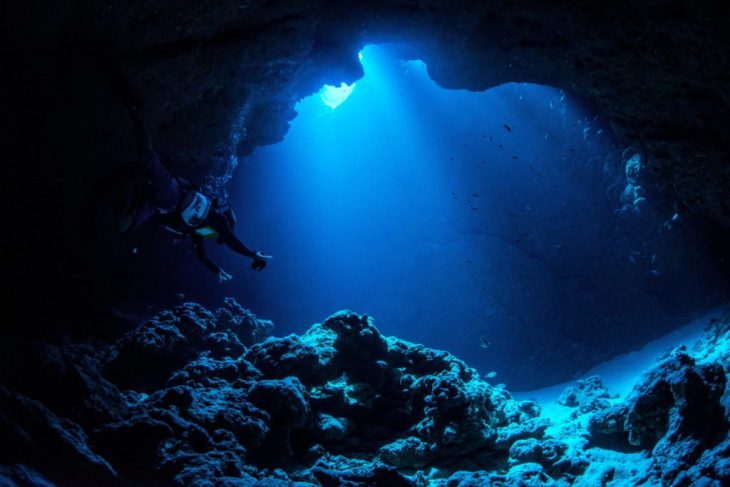Have you ever wondered what lies in the deepest depths of the ocean? Could there be scary sea monsters or other unknown life forms?
Scientists from the Shanghai Jiao Tong University and the Chinese Academy of Sciences analyzed strange life forms from the deepest places in the world. But they were not looking for sea monsters, or even animals at all. Instead, they were looking for the smallest known biological entities on the planet: viruses. Viruses are some of the least understood entities on the planet, and those that come from the depths of the ocean might be even stranger still.
Viruses are microorganisms composed of genetic material, like DNA or RNA, inside a capsule of proteins. Viruses make copies of themselves by hijacking the reproductive system of living organisms, including animals, plants, fungi, and even bacteria. When they do this, they burst open the hijacked cell, which releases new viruses. Not only is this process necessary for the viruses to reproduce, but it is also important to the ecosystem.
Most viruses in the environment infect bacteria, and the exploded bacteria are a rich nutrient source for other organisms. The importance of viruses in the shallow ocean has been widely researched for many years, but viruses found 6000 meters or more below the surface have not been studied.

Bacteriophage: a virus that feeds on bacteria. Source: CC BY 4.0 via Wikimedia Commons
The team therefore sought to understand the abundance and diversity of viruses in the deep ocean. They were able to gather DNA sequences of both viruses and bacteria from the seawater and sediment of three of the deepest trenches on the planet: the Mariana, Yap, and Kermadec Trenches. The data came from metagenomes, which contain bits of DNA from different organisms living in the trenches all mixed together.
The researchers searched through publicly-available metagenomes in the Sequence Read Archive at the National Center for Biotechnology Information (NCBI) to find sequences from the microorganisms that live in these three trenches. They also analyzed how many viruses were present and classified these viruses by their similarities and the microbes they can infect.
How does this work? Imagine a bunch of LEGO® sets mixed together, but you have the manuals and an extra pair of hands. The Sequence Read Archive data were like the manuals, and the DNA samples were the LEGO® pieces. Once you have assembled all of the models, you can distinguish between the Star Wars and Harry Potter kits and the individual sets within them. This is similar to the process that the researchers used to reconstruct and classify individual viral genomes from the metagenomes, except they used computers and software tools!
The researchers found that about 74% of the viruses from the seawater samples represented new types of viruses not previously known to science. Moreover, approximately 85% of viruses from the sediment were also undiscovered and could not be classified into known types of viruses. The Yap Trench had the most viral diversity whereas the Mariana and Kermadec trenches had low diversity levels, sharing many similar viruses between each other.
Interestingly, some of the viruses were classified as large DNA viruses. Two viruses were even classified into a new group called “huge phages,” which have larger genomes than bacteria. Additionally, the researchers matched the viruses to the certain type of bacteria that they infect and burst. One of the most abundant groups of bacteria that these viruses infect are called Oleibacter. These bacteria are heavily involved in ocean carbon cycling on their own, however, after bursting, they add more nutrients to the system like carbon and nitrogen.
Although the researchers did not find any giant squids or loch ness monsters, the creatures deep below the ocean surface, not seen by the naked eye, are diverse and unique. These viruses that are found in extreme environments can give us insight on nutrient cycles, disease, and medicine. Most of the viruses found in these deep ocean trenches were unknown, generating more questions than answers. With further advancements in technology and increased sampling, more environments will be explored and more viruses discovered, allowing us to better understand these strange inhabitants of our planet.


